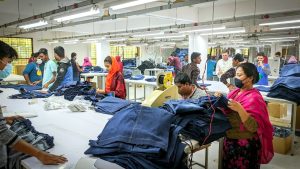Garments Orders in Bangladesh June 2023
The garment industry in Bangladesh is facing a major order crisis, with orders for the April-June season declining by 20-40%. This is due to a number of factors, including the ongoing Russia-Ukraine war, rising inflation in Western countries, and a pile-up of apparel stocks at stores.

The war in Ukraine has disrupted global supply chains, making it more difficult and expensive for brands to source garments from Bangladesh. Rising inflation in Western countries is also making it more difficult for consumers to afford apparel, leading to a decline in demand. And a pile-up of apparel stocks at stores means that brands are not placing as many new orders.
The order crisis is having a significant impact on the garment industry in Bangladesh. Many factories are facing layoffs and closures, and the industry’s export earnings are declining. The government is taking steps to address the crisis, including providing financial assistance to factories and promoting sustainable fashion.
It is too early to say how long the order crisis will last. However, it is clear that the garment industry in Bangladesh is facing a major challenge.
Impact of the Order Crisis
The order crisis is having a significant impact on the garment industry in Bangladesh. Here are some of the key impacts:
- Layoffs and closures: Many factories are facing layoffs and closures due to the decline in orders. This is putting a strain on the economy and leading to job losses.
- Decline in export earnings: The decline in orders is also leading to a decline in export earnings. This is a major blow to the economy, as the garment industry is Bangladesh’s largest foreign exchange earner.
- Sustainability challenges: The order crisis is also making it more difficult for the garment industry to meet its sustainability goals. This is because factories are facing financial difficulties and are unable to invest in new technologies and practices.
Government Response
The government is taking steps to address the order crisis. Here are some of the key measures that the government has taken:
- Financial assistance: The government is providing financial assistance to factories that are facing financial difficulties. This is helping to prevent layoffs and closures.
- Promotion of sustainable fashion: The government is promoting sustainable fashion in order to increase demand for Bangladeshi garments. This is helping to offset the decline in orders from traditional markets.
- Trade negotiations: The government is also engaged in trade negotiations with other countries in order to secure new markets for Bangladeshi garments. This is helping to diversify the country’s export portfolio.
Outlook
It is too early to say how long the order crisis will last. However, there are some signs that the situation may be improving. For example, orders for the July-September season have started to pick up.
The government is also taking steps to address the crisis, and these measures are starting to have an impact. However, it will take some time for the industry to fully recover.
In the meantime, the government and the garment industry need to continue to work together to address the challenges that the industry is facing. This includes promoting sustainable fashion, diversifying the country’s export portfolio, and providing financial assistance to factories that are facing financial difficulties.

